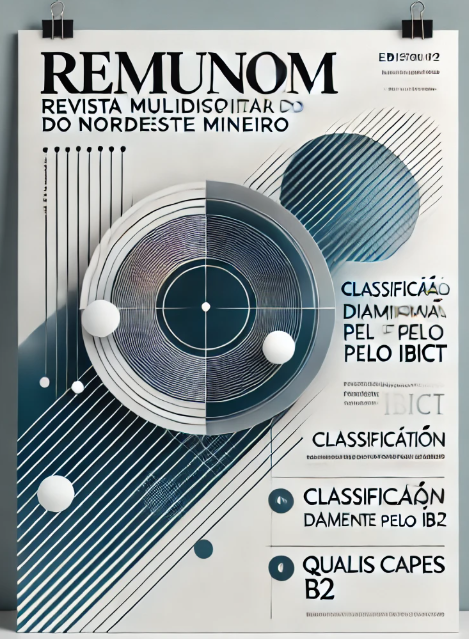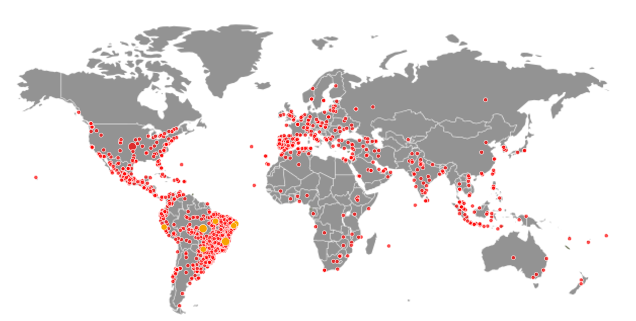Treatment of Refractory Depressive Catatonia in an Elderly Patient
DOI:
https://doi.org/10.61164/rmnm.v1i3.3535Keywords:
Catatonia, Idosa, Eletroconvulsoterapia, Relato de CasoAbstract
Objective: To present a favorable clinical outcome with the use of ECT in an elderly patient with refractory Depressive Catatonia, underscoring the relevance of this therapeutic approach and corroborating its efficacy. Case Report: Female patient, 84 years old, diagnosed with Major Depressive Disorder, progressing to Depression-Associated Catatonia. After years of management with benzodiazepines and antipsychotics without satisfactory clinical response, as assessed by BFCRS, the implementation of ECT became necessary, resulting in significant improvement in catatonic symptoms. Final Considerations: Catatonia imposes a severe impact on the patient’s social interaction, making it imperative to provide an effective and safe treatment that minimizes the risk of adverse events. ECT has been solidified as a robust therapeutic intervention; therefore, promoting and demystifying its use is a task for the medical team responsible for patients affected by catatonic conditions. Finally, the medical literature lacks information explaining the pathophysiology of the disease, so by presenting imaging exams (MRI), we aim to contribute to filling these knowledge gaps.
References
DANIELS, J. Catatonia: clinical aspects and neurobiological correlates. The Journal of Neuropsychiatry and Clinical Neurosciences, v. 21, n. 4, p. 371-380, 2009. DOI: 10.1176/jnp.2009.21.4.371.
CARROLL, B. T. Kahlbaum’s catatonia revisited. Psychiatry and Clinical Neurosciences, v. 55, n. 5, p. 431-436, 2001. DOI: 10.1046/j.1440-1819.2001.00887.x.
SMITH, J. H.; SMITH, V. D.; PHILBRICK, K. L.; KUMAR, N. Catatonic disorder due to a general medical or psychiatric condition. The Journal of Neuropsychiatry and Clinical Neurosciences, v. 24, n. 2, p. 198-207, 2012. DOI: 10.1176/appi.neuropsych.11060120.
ISKANDAR, M.; STEPANOVA, E.; FRANCIS, A. Two cases of catatonia with thyroid dysfunction. Psychosomatics, v. 55, n. 6, p. 703-707, 2014. DOI: 10.1016/j.psym.2014.01.001.
PFUHLMANN, B.; STÖBER, G. The different conceptions of catatonia: historical overview and critical discussion. European Archives of Psychiatry and Clinical Neuroscience, v. 251, supl. 1, p. I4-I7, 2001. DOI: 10.1007/pl00014199.
AMERICAN PSYCHIATRIC ASSOCIATION. Diagnostic and statistical manual of mental disorders. 5. ed., Text Revision.
EDINOFF, N. A. et al. Catatonia: Clinical Overview of the Diagnosis, Treatment, and Clinical Challenges. Neurology International, v. 13, n. 4, p. 570-586, 2021. DOI: 10.3390/neurolint13040057.
FRANCIS, A. Catatonia: diagnosis, classification, and treatment. Current Psychiatry Reports, v. 12, n. 3, p. 180-185, 2010. DOI: 10.1007/s11920-010-0113-y.
CHIOU, Y. J. et al. A case report of catatonia and neuroleptic malignant syndrome with multiple treatment modalities: short communication and literature review. Medicine (Baltimore), v. 94, n. 43, p. e1752, 2015. DOI: 10.1097/MD.0000000000001752.
ORGANIZAÇÃO MUNDIAL DA SAÚDE. Classificação Estatística Internacional de Doenças e Problemas Relacionados à Saúde – CID-11. Genebra: OMS, 2021.
NUNES, A. L. S. et al. Development and validation of the Bush-Francis Catatonia Rating Scale – Brazilian version. Arquivos de Neuropsiquiatria, v. 75, n. 1, p. 44-49, 2017. DOI: 10.1590/0004-282X20160168.
MEYEN, R.; ACEVEDO-DIAZ, E. E.; REDDY, S. S. Challenges of managing delirium and catatonia in a medically ill patient. Schizophrenia Research, v. 197, p. 557-561, 2018. DOI: 10.1016/j.schres.2018.02.019.
NICOLATO, R. et al. Delirious mania associated with bipolar disease in a Brazilian patient: response to ECT and olanzapine. The Journal of Neuropsychiatry and Clinical Neurosciences, v. 21, n. 4, p. 477, 2009. DOI: 10.1176/jnp.2009.21.4.477.
YEH, Y. W. et al. Mirtazapine treatment of periodic catatonia in organic mental disorder: a case report. Progress in Neuro-Psychopharmacology & Biological Psychiatry, v. 34, n. 3, p. 553-554, 2010. DOI: 10.1016/j.pnpbp.2010.02.001.
CATTARINUSSI, G. Brain mechanisms underlying catatonia: systematic review. Schizophrenia Research, 2022. DOI: 10.1016/j.schres.2022.11.002.
HAROCHE, A. et al. Brain imaging in catatonia: systematic review and directions for future research. Psychological Medicine, 2020. DOI: 10.1017/S0033291720001853.
BIPETA, R.; KHAN, M. A. Delirious mania: can we get away with this concept? A case report and review of the literature. Case Reports in Psychiatry, v. 2012, art. 720354, 7 p., 2012. DOI: 10.1155/2012/720354.
CARROLL, B. T. et al. Krankheitsreste: The residual signs of catatonia. A case series. Annals of Clinical Psychiatry, v. 34, n. 3, p. 192-196, 2022. DOI: 10.12788/acp.0073.
RAMOGNINO, V. et al. Catatonia in patients with dementia: a descriptive study of clinical profiles. Asian Journal of Psychiatry, v. 96, 2024. DOI: 10.1016/j.ajp.2024.104033.
AMADOR SALOMÃO, P. E. .; TEIXEIRA OLIVEIRA SANTOS, A. . EVOLUÇÃO E DESAFIOS NA AVALIAÇÃO CIENTÍFICA: DA CLASSIFICAÇÃO DE PERIÓDICOS À QUALIDADE INTRÍNSECA DOS ARTIGOS. Revista Multidisciplinar do Nordeste Mineiro, [S. l.], v. 1, n. 1, p. 1–18, 2025. DOI: 10.61164/rmnm.v1i1.3481
Downloads
Published
How to Cite
Issue
Section
License
Copyright (c) 2025 Revista Multidisciplinar do Nordeste Mineiro

This work is licensed under a Creative Commons Attribution-NonCommercial-ShareAlike 4.0 International License.




